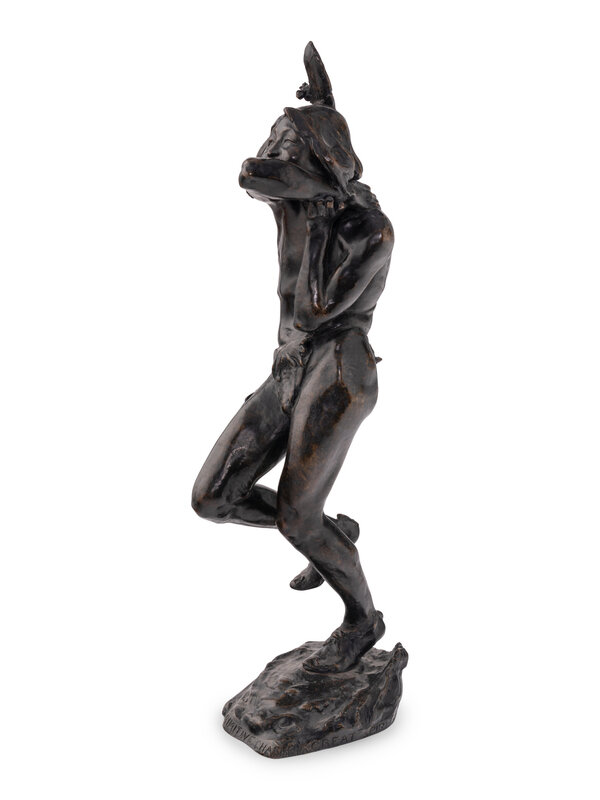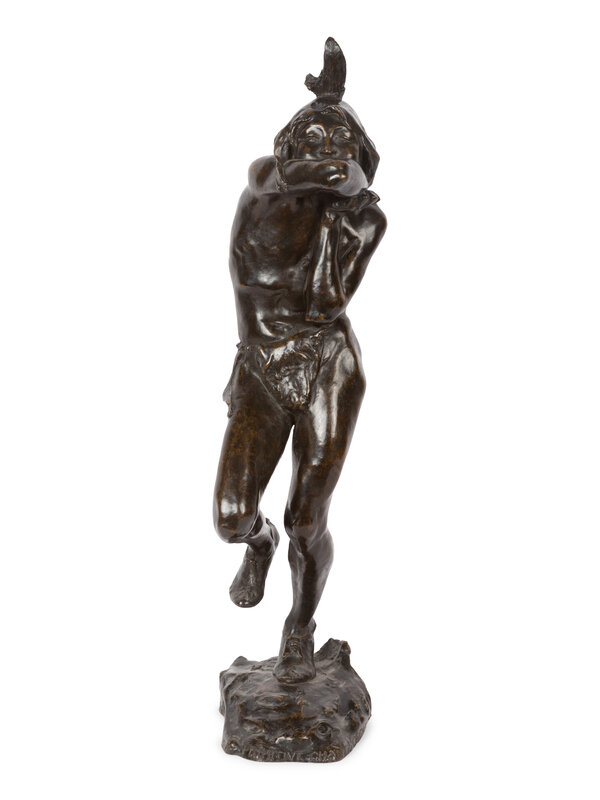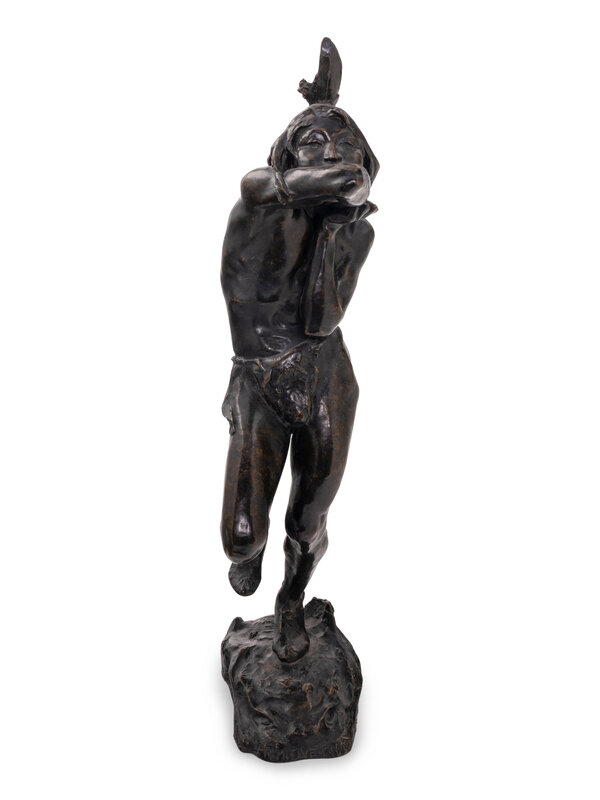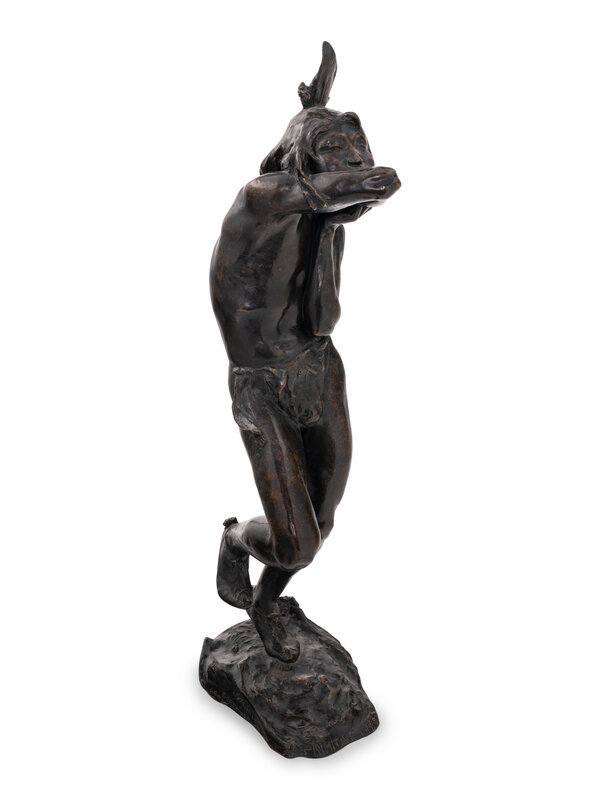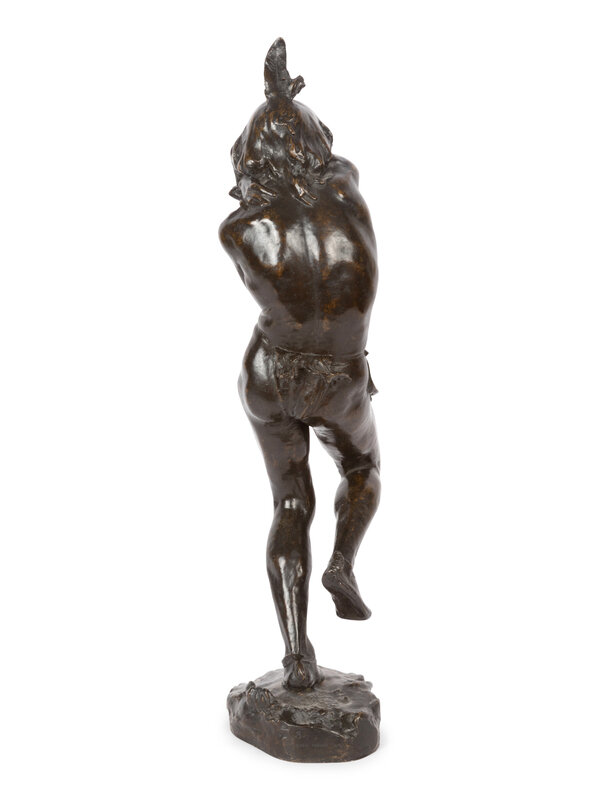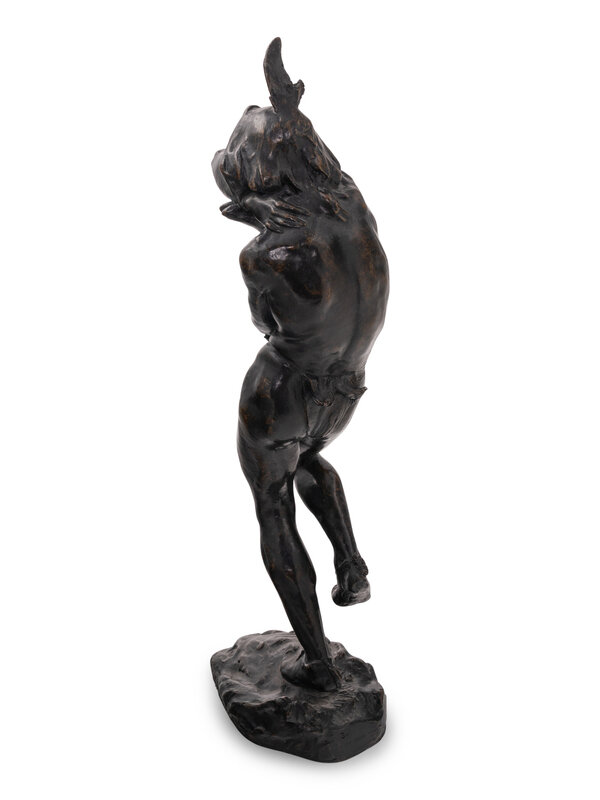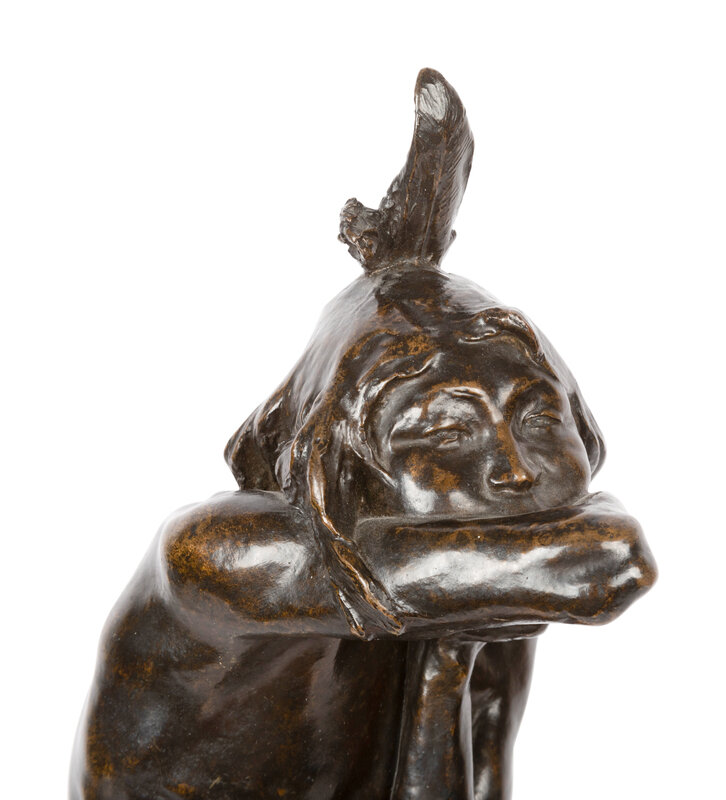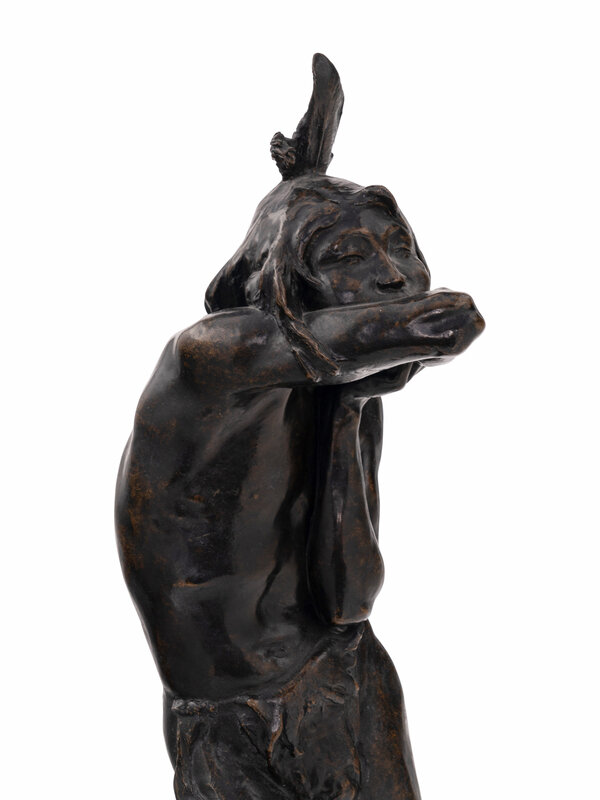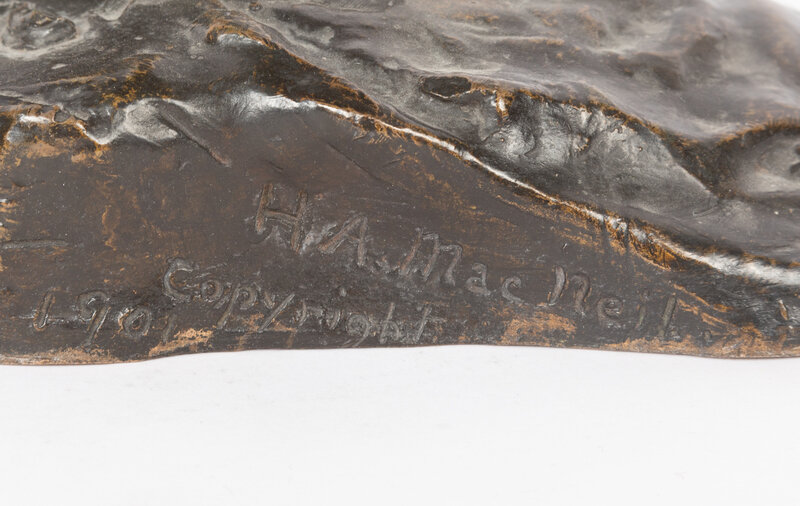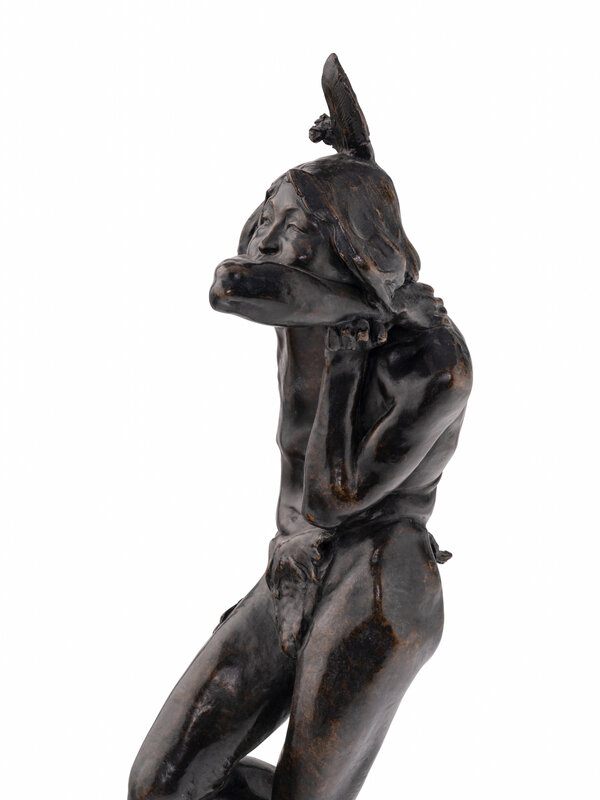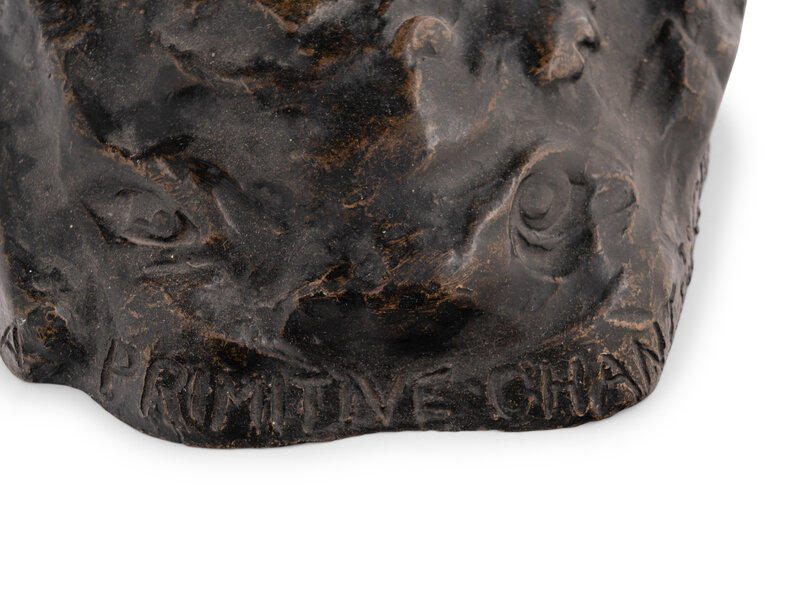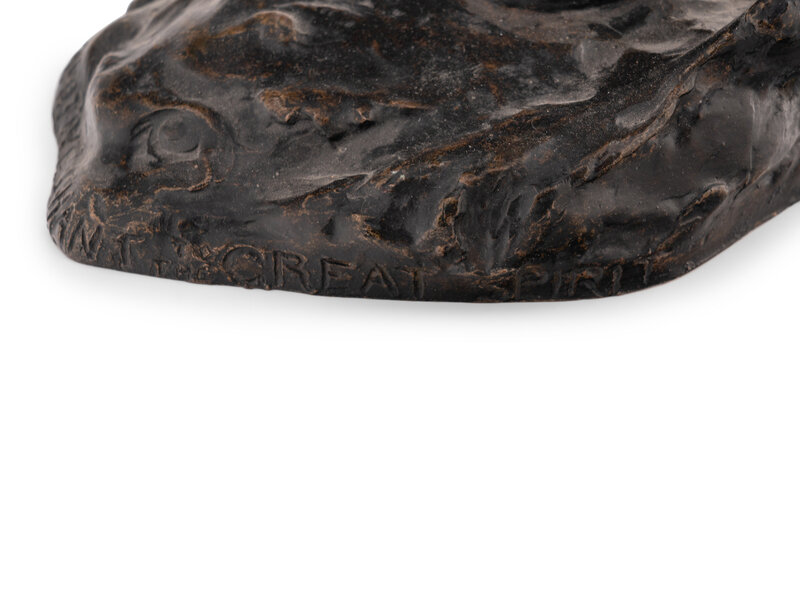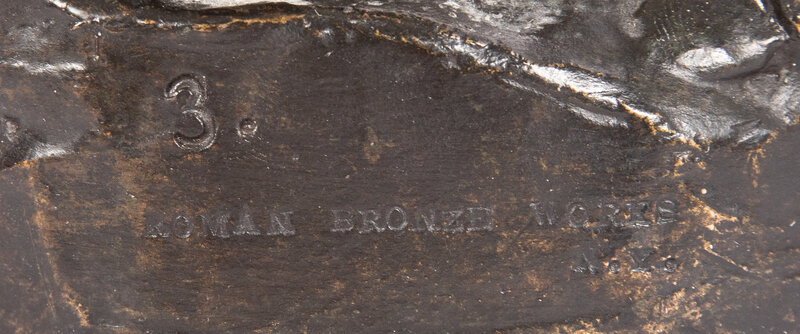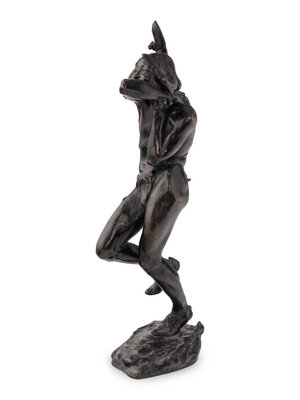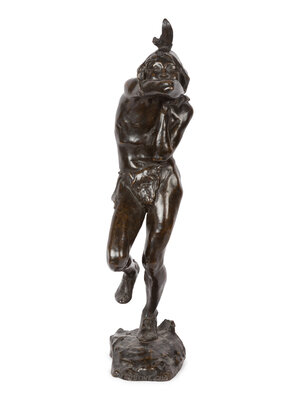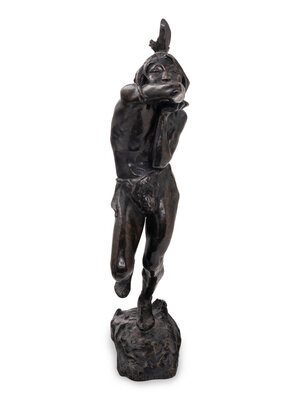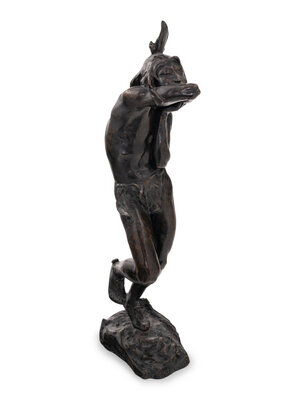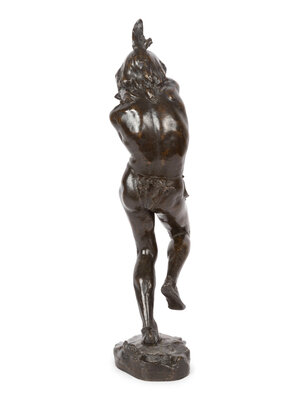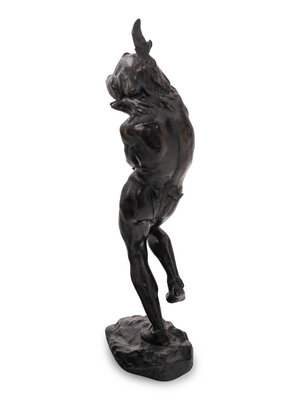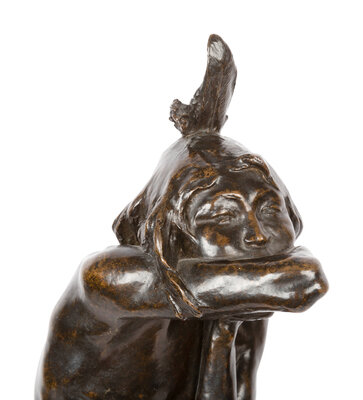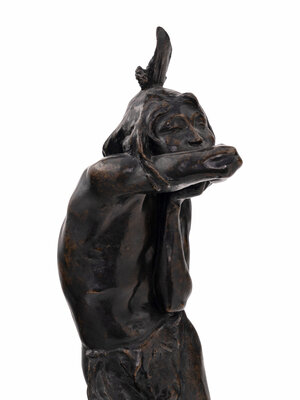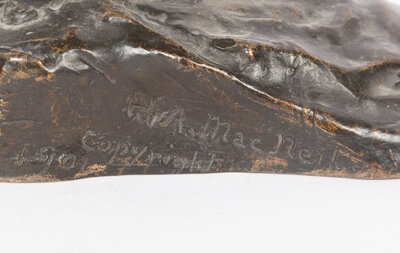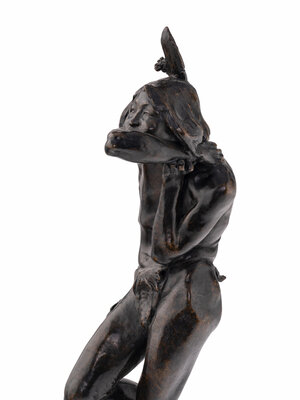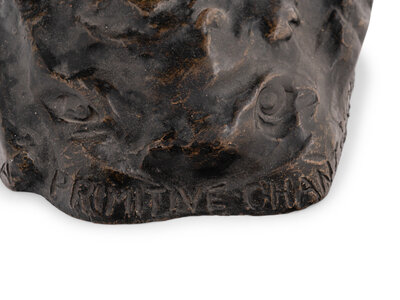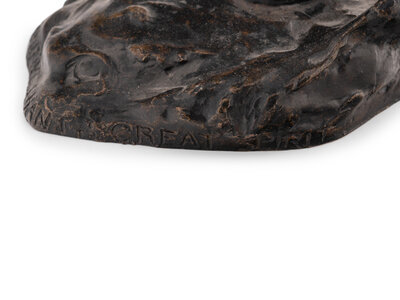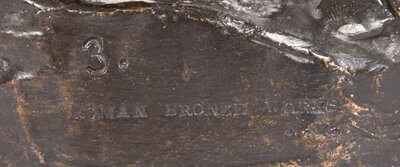Lot 82
Hermon Atkins MacNeil
(American, 1866-1947)
A Primitive Chant to the Great Spirit, number 3, 1901
Sale 1331 - Western and Contemporary Native American Art
May 9, 2024
10:00AM MT
Live / Denver
Own a similar item?
Estimate
$8,000 -
12,000
Price Realized
$7,620
Sold prices are inclusive of Buyer’s Premium
Lot Description
Hermon Atkins MacNeil
(American, 1866-1947)
A Primitive Chant to the Great Spirit, number 3, 1901
bronze
signed H.A. MacNeil, titled, numbered, dated and stamped with Roman Bronze Works foundry mark (base)
height 25 1/4 x width 6 x depth 7 1/2 inches
Provenance:
Sold: Shannon's Fine Art Auctioneers, Milford, Connecticut, October, 2010, Lot 106
One of Hermon Atkins MacNeil’s most celebrated Native American sculptures, and the one that brought him early fame, A Primitive Chant to the Great Spirit celebrates the mystical experience of a Sioux warrior Black Pipe. MacNeil had first seen Black Pipe performing at Buffalo Bill’s Wild West Show at the 1893 World’s Fair in Chicago. The artist found him freezing on the street that winter, took him in, and hired him as a model. Black Pipe remained MacNeil’s model and assistant for almost two years.
In 1895, the artist toured the Southwest with famed Western author Hamlin Garland as his guide, finding inspiration for other great Native American bronzes such as Moqui Runner and The Sun Vow. Later that year, MacNeil became the recipient of a Rineheart scholarship that allowed him, along with his wife, sculptor Carol Brooks MacNeil, to study in Rome. As a result of this opportunity, a greater sense of classical form enters Macneil’s work, though he continued to prefer Indigenous subjects. MacNeil’s successes led him to a long, stable career as a creator of public monuments and commissions, including the design for the Standing Liberty quarter, minted from 1916 to 1930, and considered one of the most beautiful United States coins.
This rare early cast of A Primitive Chant to the Great Spirit exhibits all the ecstatic power of the vision MacNeil witnessed, the vision Black Pipe described. What makes it such a powerful and in some ways modern work, is that Black Pipe’s face is mostly obscured by his own arm. No matter how you move around it, the figure seems to twist away from you, as if he is in his own world, his own realm, one you are privileged to witness but cannot fully enter. Only the toes of Black Pipe’s left foot touch the earth while his right leg is in the air, bent at the knee. It is as if his chant has all but lifted him from the earth and from this plane of reality. The title may include the word “primitive” but MacNeil seems to mean something more, something related to the Great Sprit, a connection “civilization” is severed from. This feeling is what makes the work so wonderful. You can turn and return to it again and again and yet you can never quite know what Black Pipe “sees” or what he feels and knows.
-James Balestrieri
Condition Report
Contact Information
Auction Specialist
